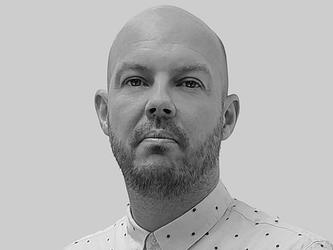Market research and the mainstream: How can researchers tackle assumptions?
During the height of the Covid-19 restrictions, a market researcher working on a financial services brief was shocked to hear an advertising agency planner claim: “Everyone seems better off in lockdown because we’re saving so much money.” Even though the daily news forecast a global meltdown, the Hackney ad-land echo chamber was telling them something different.
The research proved otherwise. Talking to taxi drivers, café workers and event planners revealed another reality about some of the mainstream population – their livelihoods had been devastated overnight and they were facing the breadline.
It’s more than four years since the EU referendum, and many of the soul-searching questions around echo chambers and filter bubbles remain crucial today. Has marketing forgotten the mainstream or are they being misunderstood – and how can market research ensure assumptions are avoided?
As one researcher says: “People don’t move outside their bubbles. But research can make the circles outside your echo chamber vivid.”
What does the mainstream look like?
The most important, albeit obvious, thing to say about the mainstream is that it’s a large, powerful audience. Newspaper publisher Reach and research agency House51 define the ‘modern mainstream’ in commercial terms – as the middle 50% in terms of household income (£20k-£55k), who represent more than 50% of brand buyers and constitute more than 70% of the population. Similarly, the ABC1 v C2DE measures favoured by the marketing and media industries show that 45% of the population is C2DE.
“This audience is the heartland of Britain – builders, plumbers, hairdressers,” says Steven Lacey, managing director of The Outsiders and author of The Age of Rage qualitative research, exploring the temperature of the mass mainstream (C1C2 ) in lockdown. “They hold the keys to No 10 and we’ll keep getting shocks such as Brexit and Trump if we continue to ignore them. But they’re not cool, they’re not linked to music, they won’t necessarily change the world, so we’d prefer to have a conversation about sustainability than the working-class community in Doncaster,” he adds.
Lacey believes the marketing industry finds it much harder to talk about class than other areas of diversity, such as race. “This is the one group we find a bit embarrassing,” he says. “The white working class is the biggest audience with the biggest unconscious bias from the industry.”
He’s not the only person to note that socio-economic class is often absent in discussions about diversity and inclusion. People of working-class origin are rarely featured or celebrated in the rapidly expanding coverage of diversity in the trade and mainstream media.
Lacey talks of prejudice in terms of prototypicality – where people immediately think of a magpie rather than a penguin when asked to think of a bird. “People think of stereotypes – estates, teen mums, Benidorm, Brexit, football thuggery, or the far right. The only people who’ve really understood this audience is the Conservative Party.”
Understanding the ‘red wall’
Deborah Mattinson, co-founder of Britain Thinks, believes we need to reassess what the mainstream is in our divided nation. “We’re divided by values – by what we feel, as well as demographics. Perhaps there isn’t a mainstream anymore?”
Mattinson’s book, Beyond the Red Wall, examines the five million people forgotten by the political class in the former Labour heartlands of Stoke-on-Trent, Accrington and Darlington. “It’s so striking how forgotten those places are... and it’s incredibly important for everyone – not just politicians who have a duty, but also marketers – to better understand them,” she says.
In October 2020, the north-south divide reared its head again with the government’s handling of the Covid-19 tier system. Mattinson talked to people who were disappointed with the Tory government they had voted in. They felt their communities were being starved of cash. As Mattinson points out, the ‘red wall’ in itself becomes a metaphor for this feeling of neglect.
Talking to the mainstream
Many market research agencies are based in the capital, but Andrew Tenzer, director of group insight at Reach, believes the industry needs to get out of London to better understand the mainstream.
It’s significant that, pre-Covid-19, conducting qual research outside the capital would often increase a client’s bill, with the addition of travel and hotel costs. Indeed, Caroline Hayter, co-founder of Acacia Avenue, suggests that the pandemic has been a helpful force in terms of boosting the diversity of recruitment through online panels.
“Classic recruitment used to be done by a woman with a little black book. With online panels, we instantly get a more diverse set because they’re geographically dispersed. Recruiters play an important role in diversity – they can no longer refer to tried and tested methods,” Hayter says.
However, Ian Murray, co-founder of House51, believes the failure to understand the mainstream lies deeper than geography. “It’s a deep structural and cultural issue in our society, and our industry is a reflection of these wider forces,” he says.
There are also assumptions about the role and usefulness of respondents of a particular socio-economic class. Lacey recalls going to a meeting with a betting client who was advised by another researcher to exclude people from DE groups because they wouldn’t have any ideas. Fortunately, the client disagreed. He pointed out that DEs equalled one-third of their customer base. “If you’re at the DE end, you’re often thought of as unintelligent and not good enough to get ideas from,” Lacey suggests.
Misunderstanding the mainstream
This socio-economic blind spot is not merely a social equality issue, but also business-critical for the marketing industry. Murray says: “If I’m getting this wrong, and not landing my communications or building products that reflect the reality, that’s bad for business. It’s not simply the right thing to do, but the effective thing to do.”
The communication industry’s preoccupation with ‘purpose’ in a Covid-19 world is redundant, according to Lacey. Brands who want to appeal to the mainstream should be considering how they can improve lives – for example, through supporting a youth club, offering coupons, or keeping prices low. “This audience don’t sit there and think about the deep meaning of an ad; they like directness,” he says.
Lacey cites one research participant who wasn’t impressed with brands ‘reaching out’ during lockdown. “They remind me of those beta males who are trying too hard, pretending to be your friend.”
Awareness of bias
As humans, we’re all capable of bias, even if we’re market researchers with honed critical-thinking skills. The trick is accepting that it exists, and continuing to analyse, interpret and check for bias all the time.
Ella Fryer-Smith launched the Unequal Truths podcast during lockdown, to tell the untold stories of researchers from low-income backgrounds. She believes we need to scrutinise assumptions about what matters at every stage of research – from setting objectives, who we’re speaking to, and how we’re speaking to them, right through to the final analysis.
Increasing time pressure from clients, however, and the premium placed on a fast turnaround with lightning-quick insights, makes it ever more challenging for researchers to consider bias in their analysis properly. Murray says: “The risk is that we don’t step back and think about how insights have been developed, and if they are objective.”
There is also concern that these biases might become burned into new technology. For example, in 2015 Amazon abandoned an automated recruitment experiment when it discovered its artificial intelligence (AI) hiring tool was not rating candidates in a gender-neutral way. In the summer of 2020, the A level statistical model was another stark illustration of what goes wrong when assumptions pollute data. AI and algorithms learn from historical practice, but what if we’re hardwiring bias into market research tech systems?
Alienating audiences
The elephant in the room is that very few research consultants come from a working-class background, so they do not reflect the mainstream audience from which they are tasked with gleaning insights. It was during an ethnographic field trip to a Sheffield council estate that it dawned on Fryer-Smith that her colleague did not understand the nuances of who they were talking to.
“We were in the [participant’s] car, when the interviewer made a disparaging comment about all the satellite dishes on the estate. They had no idea that what they were saying might be alienating.”
Konrad Collao, co-founder of Craft, had a similar experience during his early career as a researcher. Travelling with a London colleague to conduct research in Bristol, the train from Paddington slowly passed the council estate where he grew up. “There were lots of St George’s flags flying because of the World Cup,” he recalls. “And she said, ‘look at all the chavs flying their racist flags’, and I said, ‘that’s where I live’.”
In his latest book, Head, hand, heart: the struggle for dignity and status in the 21st century, David Goodhart explores a societal condition he describes as ‘peak head’, where cognitive achievement acts as a sorting mechanism in a supposed meritocracy. This is a particular problem, he suggests, in Britain and the US, and we have come to disproportionately value people who work with their head.
Along the way we have forgotten to value technical and practical abilities (hand) and caring and empathetic skills (heart), while alienating and demoralising people who do these jobs.
So, could it be that the marketing industry is suffering from cognitive dissonance leading to a tendency to make assumptions? Reach’s Tenzer and House51’s Murray think so. They have co-authored a number of white papers arguing that advertising and marketing professionals tend to have different thinking styles from mainstream communities [see panel, ‘Different thinking styles’].
Breaking down assumptions
Ethnography was cited by a number of experts as a key methodology to glean deeper understanding of the mainstream, offering an opportunity to literally ‘walk in the shoes’ of an audience they didn’t yet know. It was the beginning of a journey of understanding.
As part of her ‘red wall’ research, Mattinson used co-creation workshops, which she argued could be a way to break down assumptions. ‘Red wallers’ were placed in the same room as ‘urban remainers’, alongside some politicians, and asked to find common ground.
Focus groups can also play a key role in addressing assumptions by bringing clients into contact with people they might never have met otherwise. Hayter recalls working with a financial services company where the clients – both white, well-educated, upper-class males – had the wool torn from their eyes. “Their assumption was that people with a high-risk financial profile were disorganised, irresponsible or incapable,” says Hayter. “Then we interviewed a minicab company owner who’d gone bust the day after Lehman Brothers because they were his biggest client.”
Fryer-Smith and Collao both believe a new approach to industry recruitment is essential to drive change – and that means letting go of only considering university graduates. “This is about social and cultural capital,” says Collao. “We have to get people in the door to change things. There’s nothing wrong with having them in the post room, but that’s not going to set the agenda.”
Early steps are being taken. For example, Ipsos Mori has removed the necessity of a 2:1 degree for applicants and is conducting cognitive testing instead, while the MRS is working towards the launch of the research apprenticeship, and encouraging all research businesses to take its CEO Pledge.
Jane Frost, chief executive of MRS, says: “Opportunity matters and we must find ways to train people in the appropriate skills and reach non university-educated talent.
“The MRS [with the Advertising Association] has also proposed the creation of a skills grant as part of the government’s response to Covid-19, which is focused on online professional development, so would benefit workers wherever they are. It is aimed at school leavers hoping to get into research, as well as those who need to reskill and/or have been made redundant because of the economic impact of the crisis.”
It’s clear that diversity conversations in the industry must include everything and everybody if they’re going to drive change.
As Tenzer says: “Making the workforce more diverse is a good start. Then you’re surrounded by people with different biases from yourself.”
Back to Fryer-Smith: “We need everyone’s voices in the room. How can we understand society if we don’t reflect society? There’s no excuse in our industry. We understand demographics, we understand differences, we should be better placed than most.”
Different thinking styles
Over the past couple of years, Reach’s Tenzer and House51’s Murray have co-authored a number of white papers (Why we shouldn’t trust our gut instinct, The empathy delusion and The aspiration window) highlighting the problem of cognitive dissonance with people in the advertising and marketing industry and mainstream communities.
People in the industry see and experience the world differently. While those in the ‘modern mainstream’, as defined by the research, tend to have a more holistic and collective thinking style, those working in marketing tend to have a more individualistic and analytic thinking style.
Similarly, people in the advertising and marketing industry placed more emphasis on extrinsic motivations – such as fame, wealth and image – than the mainstream. This viewpoint also extended into the advertising and marketing industry’s view of other people’s quality of life with different incomes. For example, people in advertising and marketing dramatically underestimated the quality of life for everyone earning less than £50,000 per year (around 77% of the population).
This article was first published in the January 2021 issue of Impact.

We hope you enjoyed this article.
Research Live is published by MRS.
The Market Research Society (MRS) exists to promote and protect the research sector, showcasing how research delivers impact for businesses and government.
Members of MRS enjoy many benefits including tailoured policy guidance, discounts on training and conferences, and access to member-only content.
For example, there's an archive of winning case studies from over a decade of MRS Awards.
Find out more about the benefits of joining MRS here.













0 Comments